Air fryer vs microwave – which one is right for your home?
Which appliance is worth the counter space in your kitchen

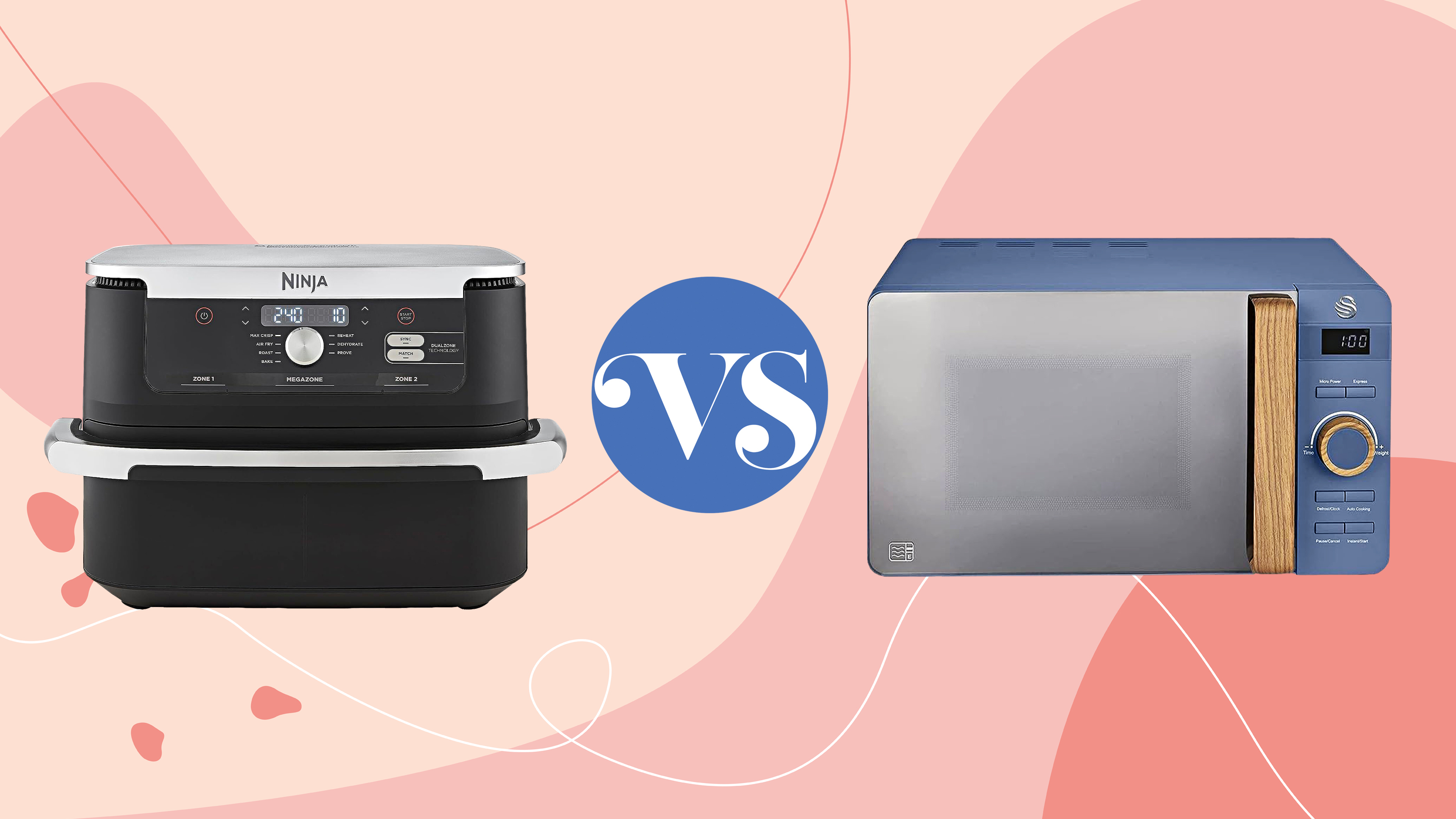
The debate between an air fryer vs a microwave is a tough one. And while we wish we could have a kitchen full of the cooking appliances, most of us lack the space to do so. So, knowing which one serves you better is key.
Of course, you probably don’t need us to tell you that the best air fryers are the talk of the town at the moment. We’re in the midst of an air fryer revolution, with homeowners across the UK racing to bag the latest release from the likes of Ninja, Instant, and COSORI. But how does it compare to the humble, classic microwave?
If you also have one of the best microwaves in your kitchen, you may be wondering whether it’s worth giving up one for the other. That’s why we’ve decided to enter these handy kitchen appliances into a battle to end all kitchen appliance battles.
Having tested and reviewed countless air fryers and microwaves at Ideal Home, we can give you the take-away information you need on air fryers and microwaves. We’ve focused on how much they cost, their ease of use, their general pros and cons, and more to bring some clarity to this dilemma.
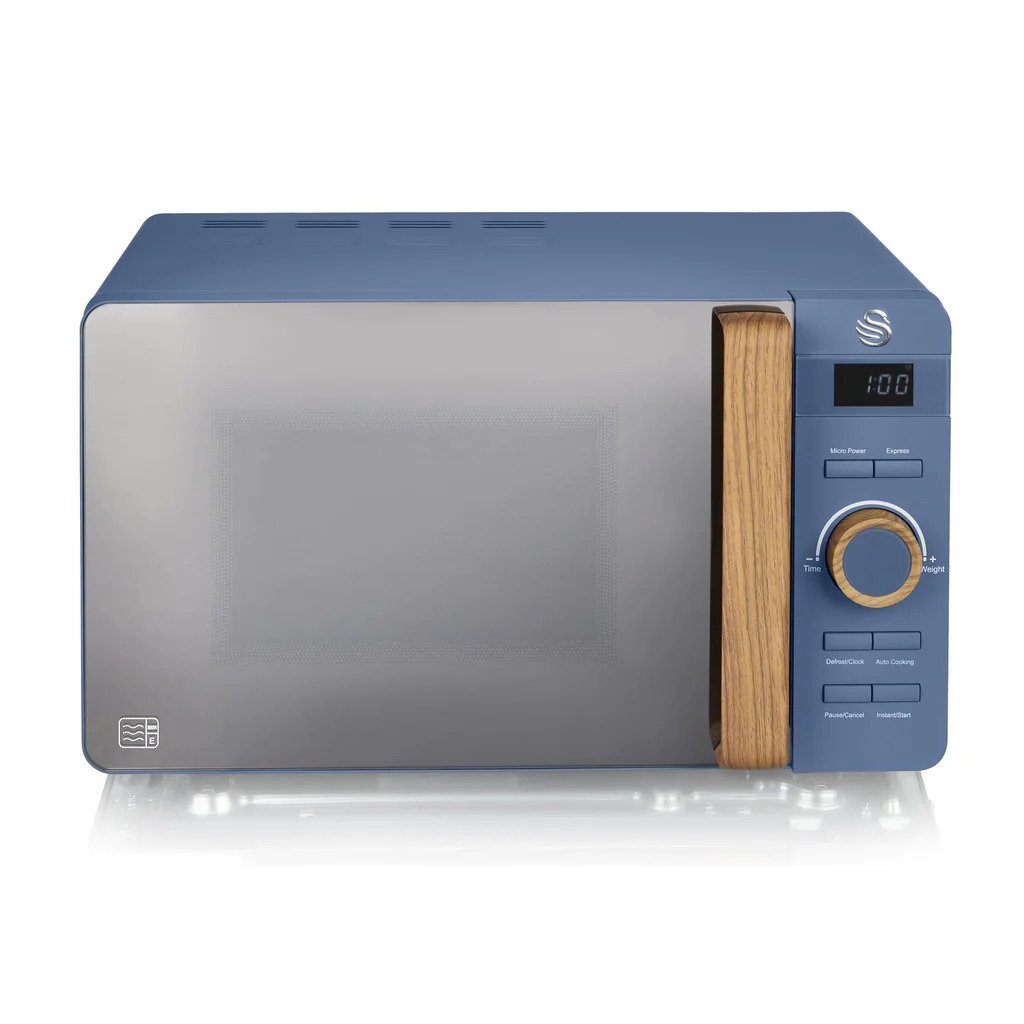
Available in a range of muted colours, you'll want the Swan Nordic Digital Microwave sitting pretty on your worktop with its stylish wooden handle. Oozing minimalist Nordic vibes, it's small in stature and is a simple machine, making it super user-friendly. That's not to say it doesn't have all the must-have features, like the express setting which heats up soup in a jiffy and the defrost setting which is super straightforward.
Read our full Swan Nordic microwave review for more information.
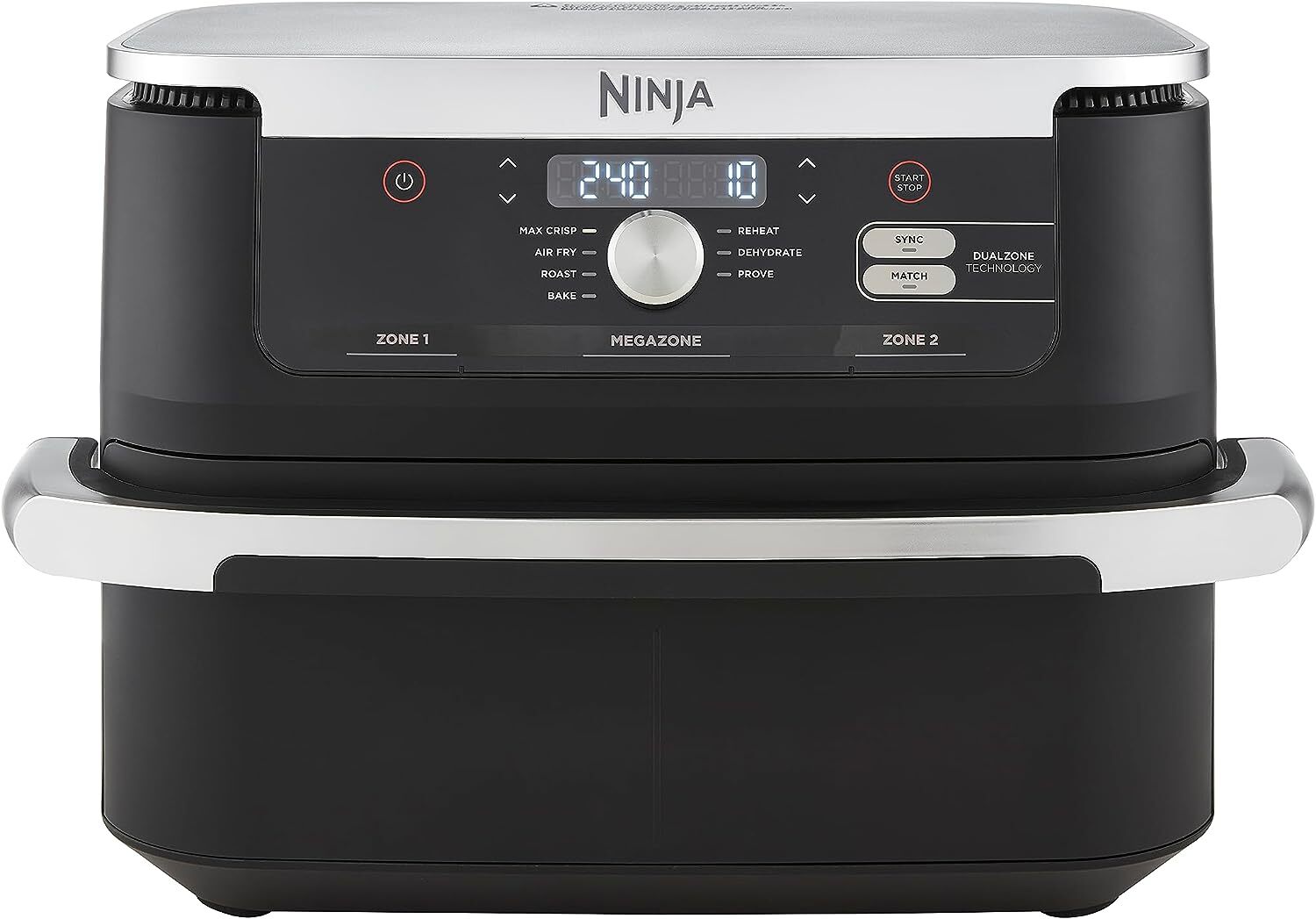
Tried and tested as one of the best air fryers for a family of four, the Ninja Foodi FlexDrawer Air Fryer is the biggest air fryer to date and certainly the largest capacity air fryer we've ever reviewed. With additional cooking functions such as roast and bake, it’s far more than just an air fryer, and yet it remains effortlessly easy to use.
Our Ninja Foodi FlexDrawer Air Fryer review has the full details.
What is an air fryer?
Think of an air fryer like a mini version of an electric fan oven. Just like an electric oven, an air fryer heats food using an element. But the difference is that the fan is more powerful and the cooking zone is smaller, these two combine to cook food evenly, quickly, and efficiently.
Air fryers are best at crisping and browning foods that you'd ordinarily cook in an oven, think crunchy breaded fish, speedy roasted vegetables, and of course, lower-fat chips.
The most common types of air fryers have removable drawers or baskets, but you can get some that, like an oven, have slide-in trays. Some air fryers also offer multiple cooking functions, like bake, grill or dehydrate. And several of the best multi-cookers now include an air fry mode as one of the options.
Sign up to our newsletter for style inspiration, real homes, project and garden advice and shopping know-how
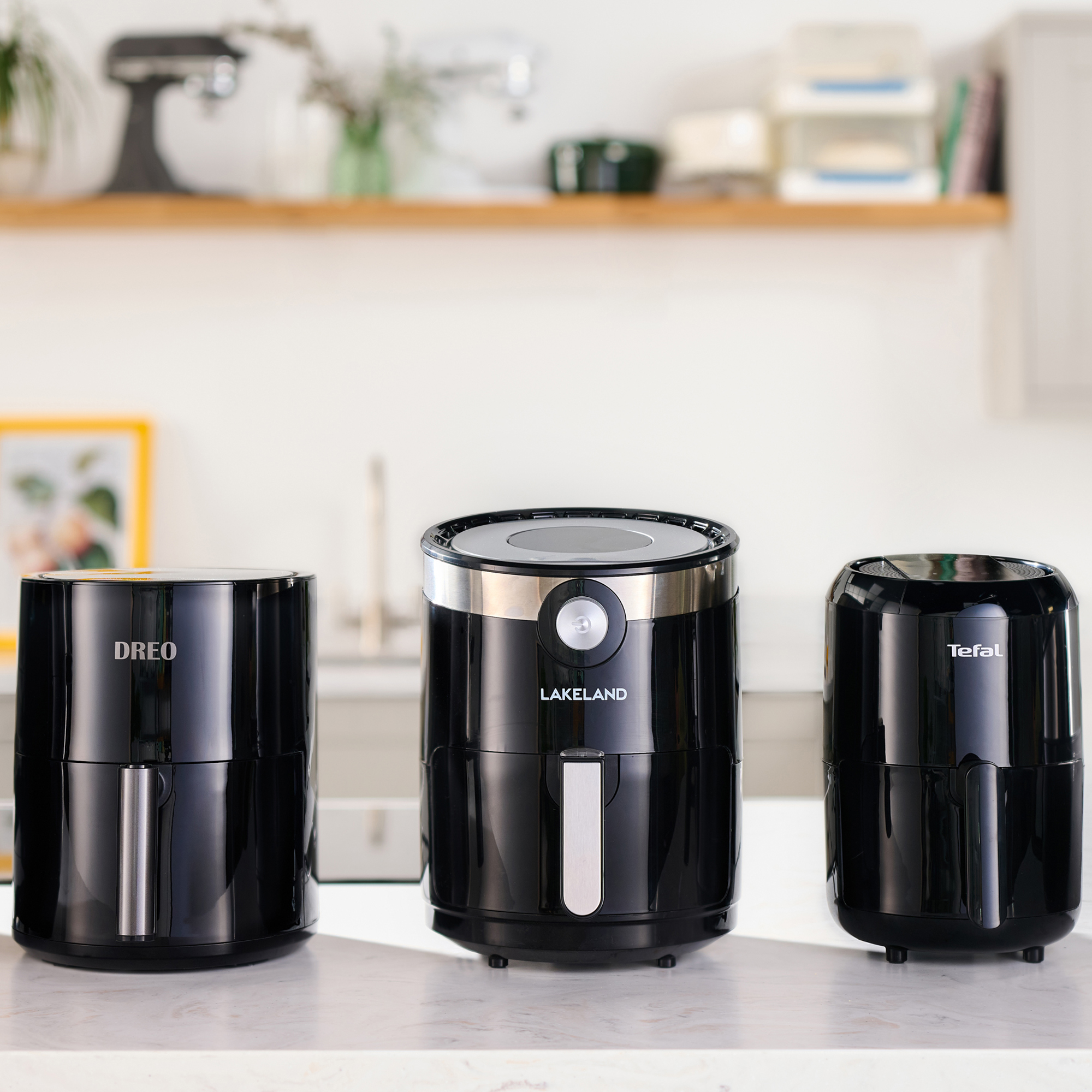
What is a microwave?
Microwaves cook using electromagnetic waves. Without getting too sciency, in a nutshell, the electromagnetic waves cause the water molecules in food to vibrate, thereby creating heat. Microwaves are ideal for quickly reheating leftovers as well as defrosting foods and they can be used for a wide variety of foods and meals.
Combination microwaves come with a grill and/or convection oven function. These can usually be used as a single cooking method or in combination with the microwave function for extra speed and flexibility.
'When comparing air fryers and microwaves, it’s worth keeping in mind that they work completely differently,' notes Thea Whyte, small appliances expert at AO.com. 'When comparing air fryers and microwaves, it’s worth keeping in mind that they work completely differently. Microwaves work by vibrating the water molecules inside the food, making them perfect for reheating food.'
'Whereas air fryers use convection heating, in which the hot air is distributed throughout the appliance giving food that crispy coating.'
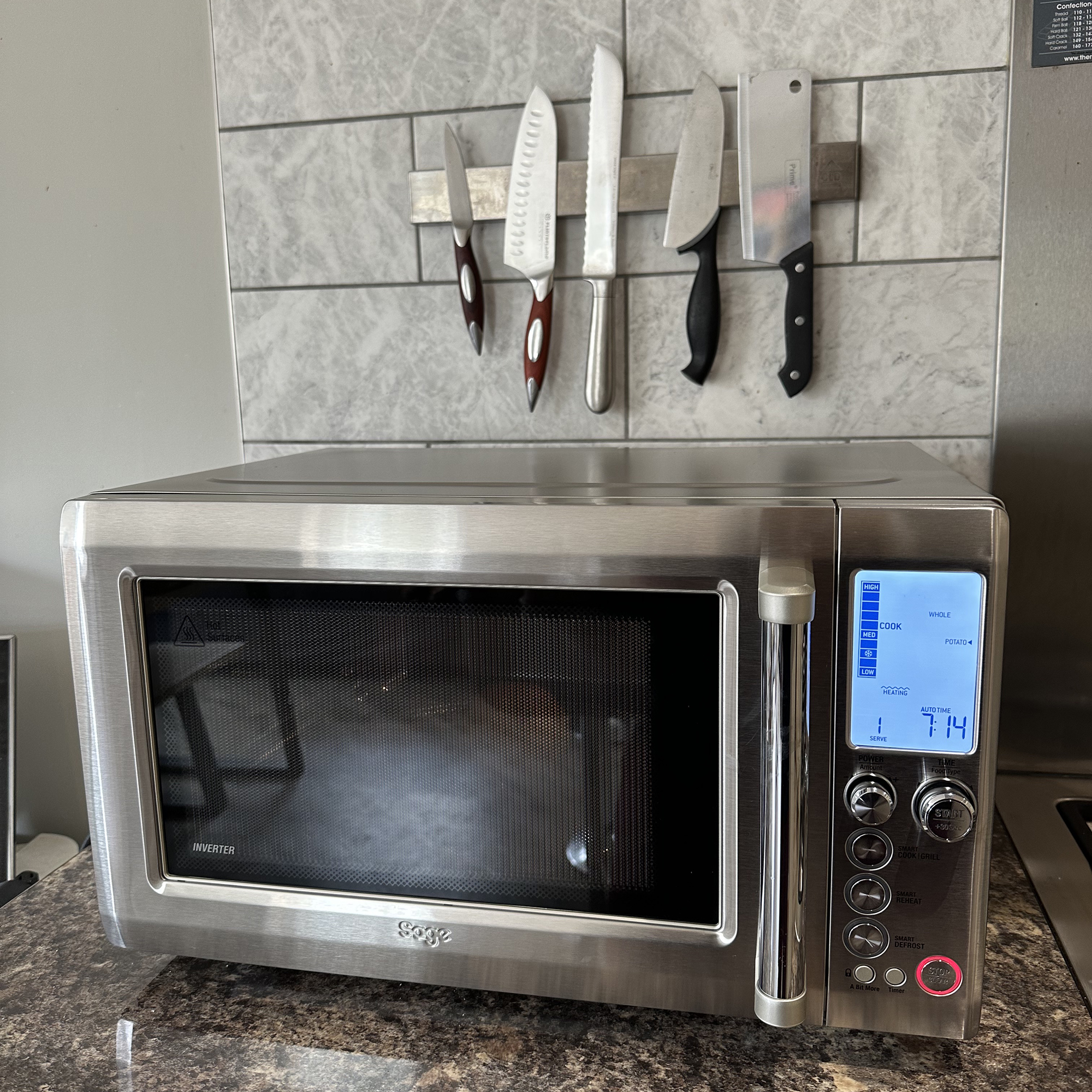
Saying that, some of the top rated microwaves on the market can grill and crisp up foods too, making them even more versatile.
One of the most popular models that can do it all is the Sage The Quick Touch Crisp which has all the space-age gadgetry you’d expect from the brand. Our reviewer Ellen tried grilling a pizza and it was quicker and easier than using a conventional grill, with the same results.
Benefits of a microwave
Microwaves don’t dry food out in the same way as an oven, which is great for keeping foods moist and succulent. Microwaves can cook foods from scratch, but they excel at reheating already cooked foods and meals, like leftovers or ready meals. Not only that but they can defrost frozen ingredients and meals in minutes, without any adverse effects.

The downside to standard microwaves is that they don’t brown foods nor do they create crispy crunchy toppings either. However, combination microwaves that feature a grill and a convection oven function solve this problem. And being able to combine speedy microwave power with the drying and crisping capabilities of a grill or oven, makes for a much more versatile appliance.
Benefits of an air fryer
One of the great things about air fryers is that they come in a wide variety of shapes and sizes, from the best small air fryers, which are tiny compact options that are best for feeding one, to air fryers for a family of four that can feed the whole family.
In terms of cooking, air fryers, like microwaves, are speedy. But unlike microwaves, they’re superb at crisping and browning foods, so they can create crunchy, crispy toppings and coatings. Air fryers are an excellent alternative to your oven, cooking much faster and usually with better results, something we explored in our air fryers vs ovens feature.
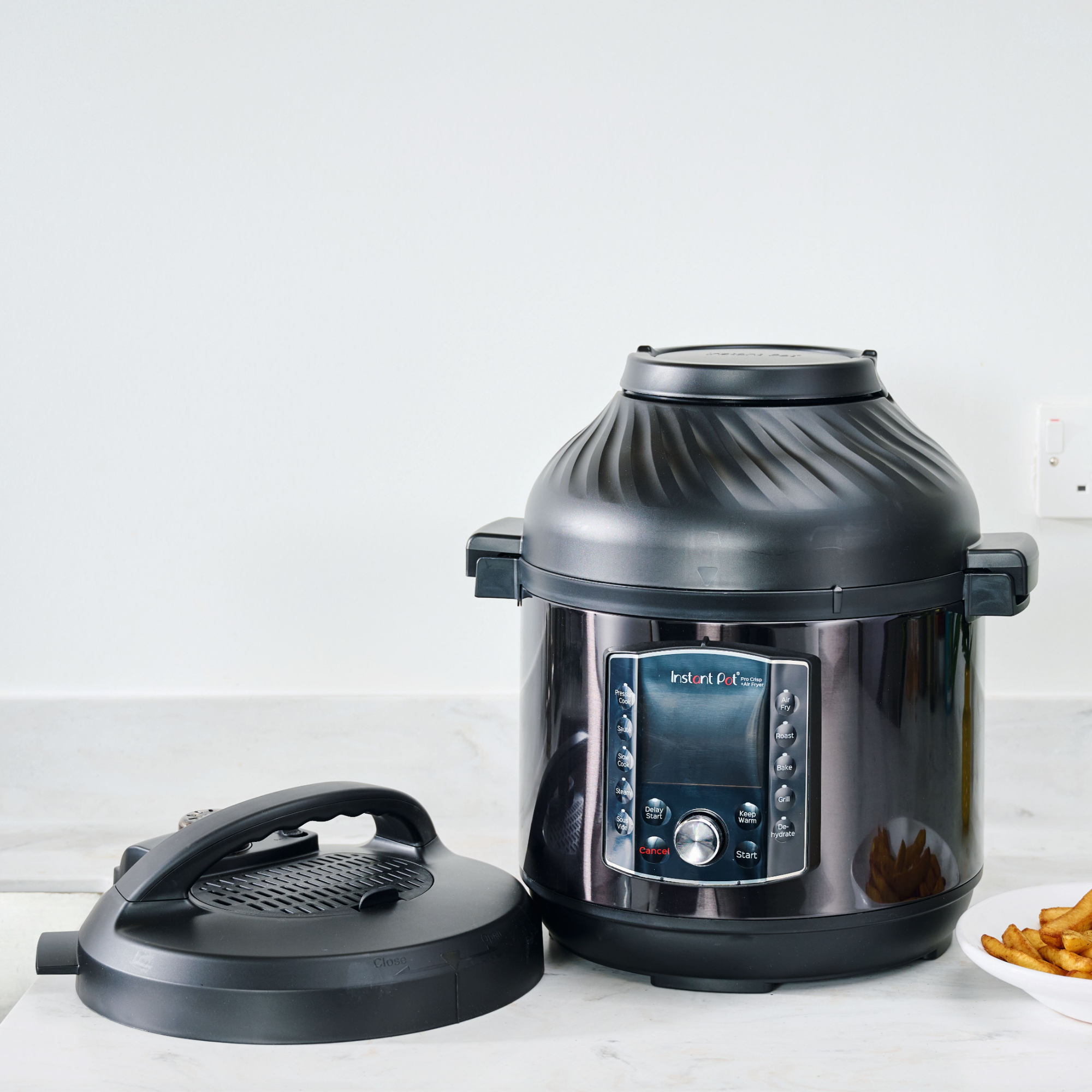
The downside of air fryers is that they’re not suitable for foods that you don’t want to brown, crisp, or dry out. So you can’t use an air fryer to reheat a stew or defrost a pack of frozen beef mince like you can a microwave.
Which is easier to use?
Since most of us have grown up with a microwave in the house, we generally know how to operate them. Whereas air fryers are a much newer phenomenon, so they can take a minute to get your head around.
During my years of testing experience, we must admit, we've encountered some pretty confusing microwaves. The tricky ones are often combi microwaves or those with lots of presets, and they can take some time to get to grips with.
Air fryers on the other hand, tend to be (but not always) fairly straightforward to operate. But as with most kitchen appliances, some brands design better, more intuitive control panels than others, and the same goes for microwaves.

It’s not just about figuring out the controls though. We must consider the actual cooking process when thinking about which is easiest to use. And again, because most of us know what can be cooked in a microwave, as well as being able to confidently predict the outcome, microwave cooking is easier to get your head around.
Air fryer cooking requires a bit of learning. How often to turn or shake foods, how much oil to use, as well as what foods can be cooked in an air fryer. But most people will agree that once you’ve ventured into the world of air fryer cooking, you’ll quickly come to understand just how easy it is and will soon embrace it.
Which is easier to clean?
Luckily neither appliance takes much to clean. Figuring out how to clean a microwave is much simpler than how to clean an air fryer.
There’s a clear winner here, air fryers are undoubtedly easier to clean. Virtually all air fryers (with the exception of oven-style models) have some form of removable cooking basket that contains the mess and grease. Some are dishwasher safe and those that aren’t can easily be washed by hand in the sink. They’re super simple to keep clean.
Microwaves on the other hand tend to just have a removable glass turntable. The rest of the interior has to be cleaned in situ, and food splatters quickly bake on and become tough to remove. We're sure you’re familiar with some of the many hacks, such as microwaving bowls of water in an attempt to loosen the grime and make cleaning easier.

Air fryers usually come with a number of small attachments, which can make cleaning them a little more fiddly but on the whole, most air fryer inserts are dishwasher safe.
If you don't have a dishwasher, most of the air fryer components often have non-stick coatings so they are also easily cleaned by hand using soapy water. Any components without nonstick should be cleaned gently with a soft cloth.
The main thing to remember is that if you have a preference for either handwashing or using a dishwasher, just be sure to check the specifications of any model you're thinking of buying.
Which looks better?
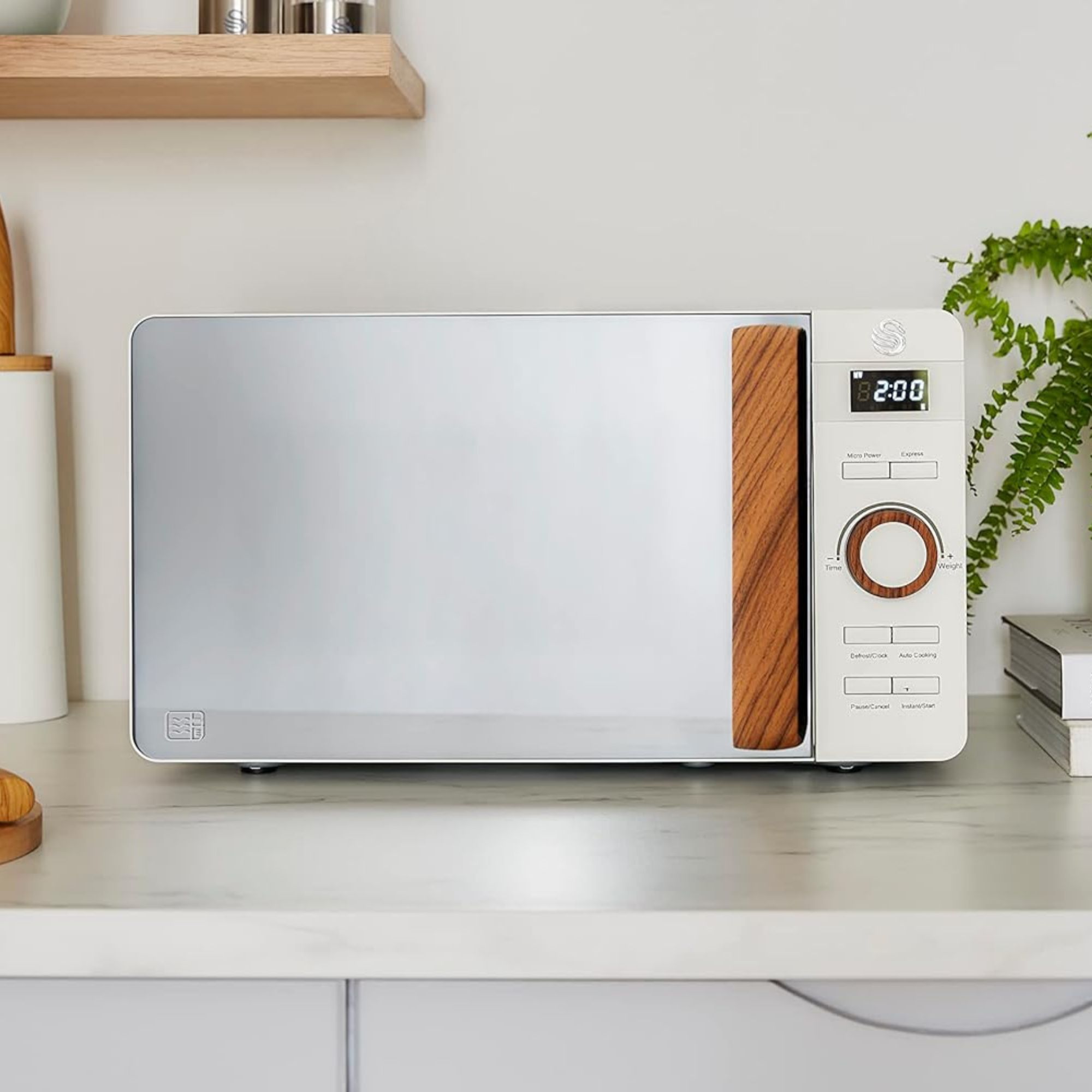
When it comes to appearance, it really does depend on the model of the microwave or air fryer.
However, overall air fryers just look better. Plus, they are easier to hide if you don't want appliances permanently out on your worktop. A small air fryer like the Ninja AF100UK Air Fryer is easily stored away compactly in a cupboard and taken out as needed, due to its lightweight design. You just have to get over the perceived hurdle in getting it in and out when needed.
That's not to say that microwaves can't look great sitting out. For example, Swan's Digital Nordic microwave got our vote in the microwave style stakes with its sleek wooden handle and minimalist-looking dial.

Which is more affordable?
When it comes to affordability, we recommend considering the initial cost and the long-term price to run.
This varies on the specific model, but generally, microwaves are cheaper to buy and cheaper to run. 'It’s well-known both of these appliances are considerably cheaper to run than your conventional oven and cook food far faster,' says Thea from AO.com.
'The microwave is generally the most efficient way to heat up and cook food - it’s always quicker and its smaller size (as opposed to the oven) means that the heat is more focused on whatever’s being cooked. Opt for this appliance whenever possible,' adds Ben Gallizzi, senior content editor at Uswitch.
Just remember not to leave either appliance on standby and switch them off as they will still draw electricity, especially if they have LED screens.
So how much does it cost to run an air fryer if the microwave is the cheapest to run? If you switch your cooking from a conventional oven to an air fryer, you'll still be using less energy and your bills will subsequently be lower.
Can you replace a microwave with an air fryer?
Although microwaves used to be one of the top kitchen appliances, we’re seeing a growing trend of people ditching their microwaves in favour of an air fryer. But can you really replace a microwave with an air fryer? And can you replace an air fryer with a microwave?
Well, this all depends on how you want to use these appliances. Although they are very similar in the sense that they both heat up food, it’s also important to note that there are differences between an air fryer and a microwave.
For example, if you want to heat up last night’s lasagne for lunch, a microwave will heat it up to the perfect temperature. But if you were to use an air fryer, it will heat it up and also continue to cook the lasagne. This could result in burnt pasta that is no longer edible.
However, if your aim is to cook a meal from scratch, it’s unlikely that you’ll be able to cook the whole thing in the microwave. After all, you can cook meat in a microwave (as long as you make sure it’s cooked through), but it’s never going to be as good as cooking in an air fryer or oven.
Final verdict: Which should you pick?
Our honest opinion is that it’s not an either/or scenario. We think these two appliances complement each other very well.
A microwave excels at tasks like reheating leftovers without drying them out, as well as defrosting frozen foods, or warming the cuppa that cooled down while you were chatting to a neighbour at the front door.
An air fryer is brilliant at creating crispy, crunchy foods that you’d otherwise cook in an oven. And it can cook foods in half the time your oven takes, often without even preheating first. So while a combination microwave might have a convection oven and a grill, these features are no match for an air fryer.
We're in favour of keeping things simple and there are plenty of appliances that we don’t think anyone should waste their money on.
But, in this case, if you’ve got the space and the budget for both, we don’t think you’ll regret it. Our only advice is to try and avoid those obscure brands at the really budget end of the scale, especially when it comes to air fryers. If you’re feeling the pinch, check out our best air fryers under £100.
FAQs
Which is better microwave or air fryer?
Microwaves and air fryers both have their pros and cons, but there’s no denying the fact that air fryers are having a moment right now. Customers love the ability to ‘fry’ their foods in a healthy way, and cook their dinner more efficiently.
Which appliance wins is ultimately a matter of choice and is determined by how you wish to use the appliance. Although there are similarities between the two, they are also very different. So, having both in your kitchen wouldn’t go amiss.
Can an air fryer replace a microwave?
If you find that you no longer use your microwave and only use your air fryer, an air fryer can definitely replace a microwave. However, it’s important to note that air fryers can’t reheat food in the same way than an air fryer can, so you may miss out on this functionality.
Alternatively, you could purchase a microwave that also has air fryer functionalities so you get the best of both worlds.
Hopefully this has helped you come to your decision about whether an air fryer or a microwave is right for you and your needs.

Jenny is Senior Digital Editor and joined the team in 2021, working across Ideal Home, Real Homes, Homes & Gardens, Livingetc and Gardeningetc. Since getting on the property ladder, her passion for interior design and gardening has taken on a new lease of life. She loves collecting and salvaging unique items (much to her other half's despair) but sniffing out stylish home bargains is her one true love.
- Lauren BradburyContent Editor (House Manual)
- Helen McCueFreelance Reviewer